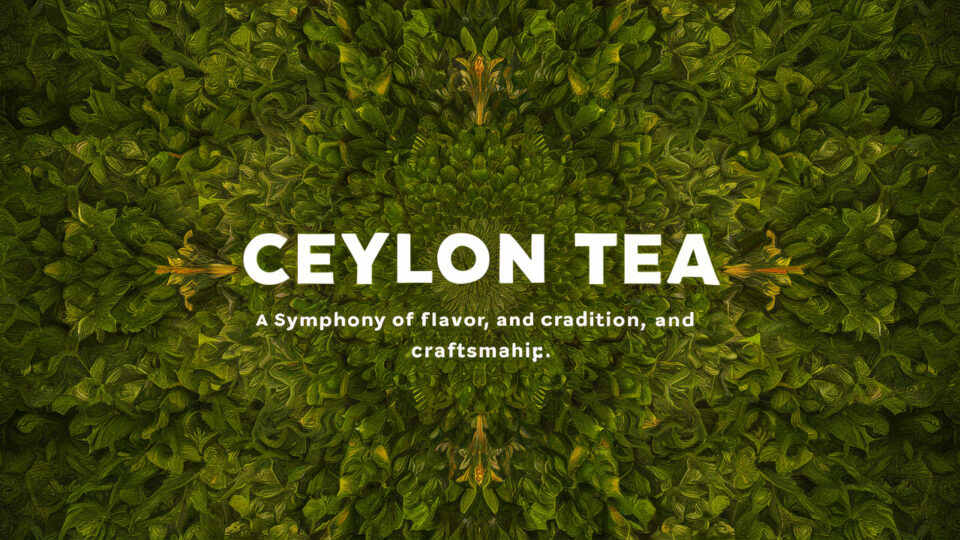Nestled in the heart of the Indian Ocean, Sri Lanka—formerly known as Ceylon—is renowned for producing some of the finest tea in the world. Ceylon tea is not just a beverage; it’s a symbol of heritage, culture, and tradition. The island’s unique geography and climate contribute to the distinctive taste and aroma that make Ceylon tea a favorite among tea enthusiasts globally.
A Historical Journey
The story of Ceylon tea began in the 19th century when British colonists transformed Sri Lanka’s coffee plantations into tea gardens after a devastating coffee blight. James Taylor, a Scottish planter, is credited with pioneering the tea industry in 1867. His innovative methods and dedication laid the foundation for what would become a thriving industry.
“Tea is to Sri Lanka what wine is to France,” says Susan Bastian, a tea historian. “It’s not just an economic asset but a cultural treasure.”
The Terroir of Ceylon
Ceylon tea’s unique characteristics are influenced by the island’s diverse topography and climate. The tea is classified based on the altitude at which it is grown:

| Altitude | Regions | Characteristics |
|---|---|---|
| Low Grown | Ruhuna, Sabaragamuwa | Full-bodied, robust, and strong |
| Mid Grown | Kandy, Matale | Balanced, with a mix of strength and flavor |
| High Grown | Uva, Dimbula, Nuwara Eliya | Delicate, aromatic, and light with floral notes |
The high-grown teas from Nuwara Eliya are particularly prized for their delicate flavor and are often referred to as the “champagne” of Ceylon teas.
Production and Processing
The production of Ceylon tea involves several meticulous steps:
- Plucking: The best tea leaves are handpicked, ensuring only the finest quality leaves are selected.
- Withering: The leaves are spread out to reduce moisture content.
- Rolling: The leaves are rolled to release essential oils.
- Oxidation: The rolled leaves are left to oxidize, developing their flavor and color.
- Drying: The leaves are dried to halt oxidation and lock in the flavor.
- Grading: The tea is sorted and graded based on size and quality.
Ceylon Tea Varieties
Ceylon tea is available in several varieties, each offering a unique taste experience:
- Black Tea: The most common type, known for its rich, bold flavor.
- Green Tea: Milder and less oxidized, with a more delicate taste.
- White Tea: Made from young buds, offering a subtle and refined flavor.
Global Appeal
Ceylon tea has a dedicated following worldwide. It is exported to over 140 countries, with major markets in the Middle East, Russia, and the United States. The Tea Board of Sri Lanka ensures strict quality control, maintaining the high standards associated with Ceylon tea.
“Ceylon tea is not just a drink; it’s an experience,” says Anura Siriwardena, a tea sommelier. “Each cup tells a story of tradition, dedication, and passion.”
Health Benefits
Apart from its delightful taste, Ceylon tea is also known for its health benefits. Rich in antioxidants, it helps in reducing the risk of chronic diseases, boosting metabolism, and improving heart health.
Conclusion
Ceylon tea is more than just a beverage; it’s a testament to Sri Lanka’s rich cultural heritage and natural beauty. Whether you prefer a strong, full-bodied cup or a light, aromatic brew, Ceylon tea offers something for everyone. So, the next time you sip on a cup of Ceylon tea, take a moment to appreciate the journey it has taken from the lush hills of Sri Lanka to your teacup.

